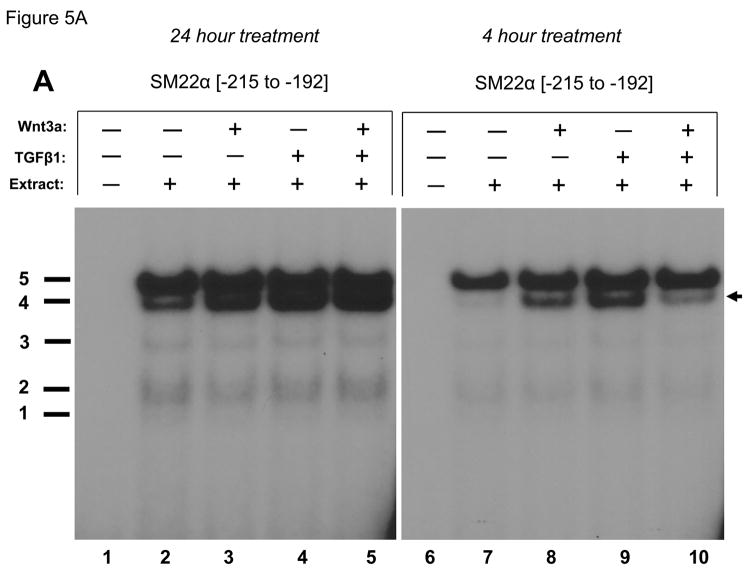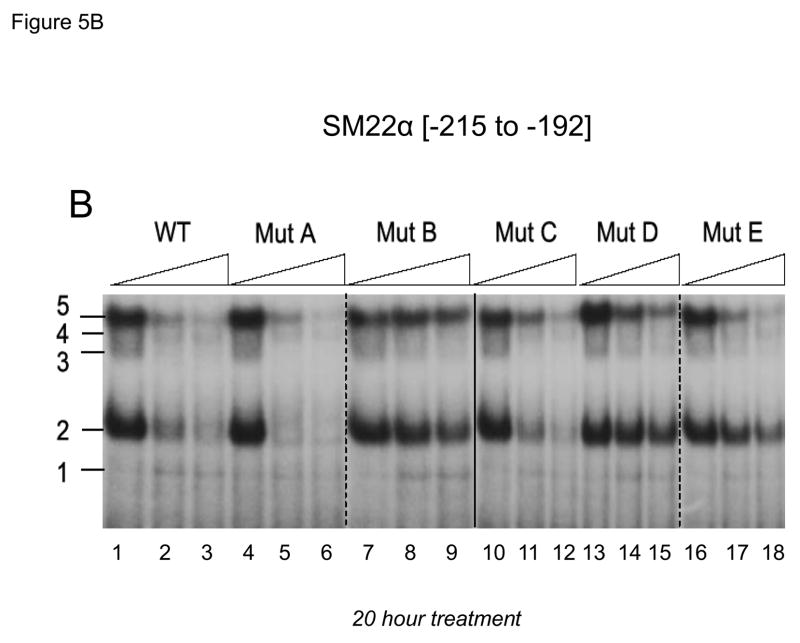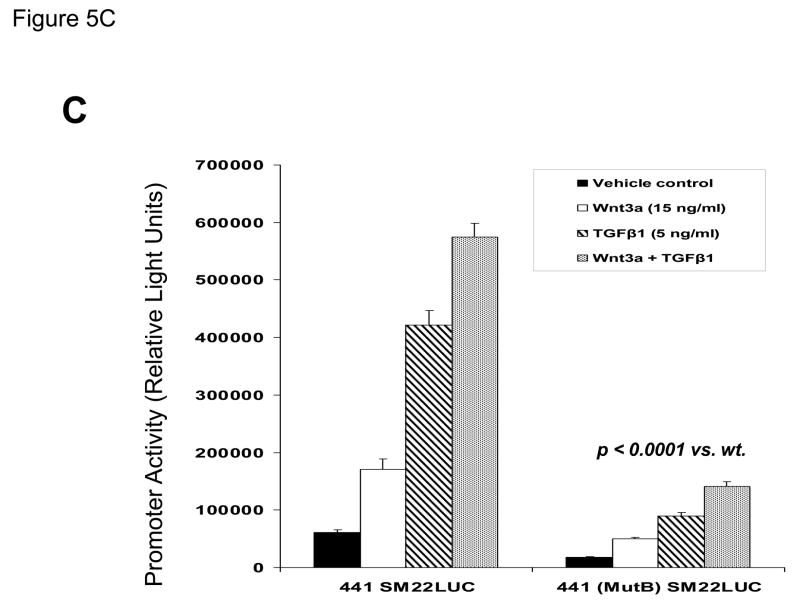Figure 5. A CAGAG motif in the SM22α promoter region −203 to −199 assembles specific DNA-protein complexes that support basal and Wnt3a+TGFβ1 transcriptional responses.
Panel A, a radiolabeled synthetic duplex oligonucleotide of the SM22α promoter region −215 to −182 (Figure 4) was incubated with cell extracts from either vehicle, Wnt3a, TGFβ1, or Wnt3a + TGFβ1 C3H10T1/2 cultures (24 and 4 hour treatments as indicated). DNA-protein complexes were resolved by native gel electrophoresis. Five complexes are identified, one of which (complex 4) is increased by treatment with either Wnt3a (lanes 3, 8) or TGFβ1 (lanes 4, 9). All gel shift data presented are representative of results observed in 2 to 5 independent experiments. Panel B, cold competition assays using radiolabeled SM22α [−215/−182] and extracts from Wnt3a-treated C3H10T1/2 cells (20 hour treatment). See Figure 4 for mutant sequences. Panel C, the mutB alteration of the CAGAG element was introduced into the SM22α fragment −441 to +5, and the effects on basal and stimulated promoter activity evaluated. As compared to native 441 SM22LUC, 441 (mutB) SM22LUC exhibited >70% reduction in basal and stimulated activity.



